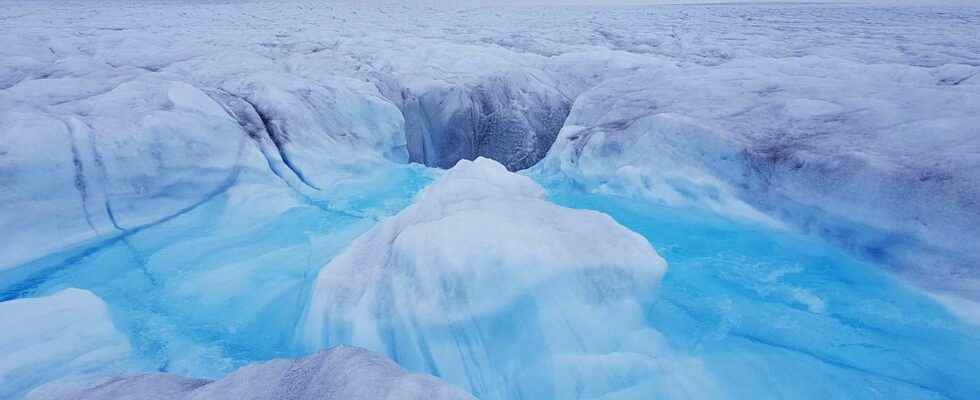You will also be interested
[EN VIDÉO] Greenland’s glaciers are melting at high speed The Helheim glacier – here in full calving, understand, in full production of icebergs – is one of the three largest in Greenland.
Water falling and at the end, a turbine and a generator. This is how a dam can generate electricity. What relationship with Greenland? Those are Cambridge University researchers (United Kingdom) who present it to us today. According to them, the waters from the melting of surface tend to fall on the base of the ice cap. By producing a large amount of heat. And that poses a problem. Because this heat accelerates the melting of the ice a little more.
Remember that each year, as summer approaches, when the Sun returns and the temperatures rise, thousands of lakes and streams resulting from the melting of the ice are forming on the surface of the ice cap from Greenland. These waters tend to flow towards the base of the cap through cracks or fractures. And it is precisely this phenomenon that the researchers involved in the Responder project have studied for the first time. “We used to be interested in the effects of frictionof the’energy geothermal heat or latent heat released when water freezes, but we had never looked at the effects of heat generated by meltwater draining to the base of the ice cap”notes Poul Christoffersen, a researcher, in a press release from the University of Cambridge.
Researchers wanted to finally understand how and why Greenland melt lakes drain so quickly. And what is their effect on the overall behavior of the ice sheet. Information is all the more important in the current context of anthropogenic global warming. A context in which the Greenland ice cap has become the main contributor to sea level rise.
Meltwater warming the base of the ice cap
It is a measurement of the rate of melting of the base of the cap – some 1,000 meters below the surface – thanks to a radiosonde technique which put the chip in the ear of the researchers. Because this rate of melting was often as high as that measured on the surface by the stations weather report. The surface receives heat from the sun. But the base does not receive any.
To confirm their findings, the researchers independently measured the water temperature at the base of the Greenland Ice Sheet from sensors installed in a borehole near the store Glacier, one of the main glaciers in Greenland which they studied for seven years. Result: 0.88°C. A surprisingly high temperature for an ice sheet base whose temperature merger is at -0.40°C.
How do scientists explain these measurements? By a system of drainage much less effective at the base of the cap than on the surface. “What we’re seeing is frictional heating in the water itself. The heat generated by the waterfalls is melting the ice from bottom to top at a rate we could not have imagined”comments Poul Christoffersen.
A mechanism to integrate into ice sheet melting models
The researchers estimate that up to 82 million cubic meters of meltwater was transferred to the bed of Store Glacier each day during the summer of 2014. According to them, the power produced by the waterfall during the peak periods is comparable to the power produced by the Three Gorges Dam (China), the largest hydroelectric power station in the world. With a melt zone that spans nearly a million square kilometers at the height of summer, the Greenland Ice Sheet produces more thanhydroelectricity than the ten largest hydroelectric power stations in the world combined!
“Given what we are seeing at high latitudes in terms of climate change — a volume of increasing surface water and which flows almost entirely towards the base —this form of hydropower could easily double or triple, and we still don’t include those numbers when estimating the ice sheet’s contribution to thesea level rise »notes Poul Christoffersen.
Interested in what you just read?
